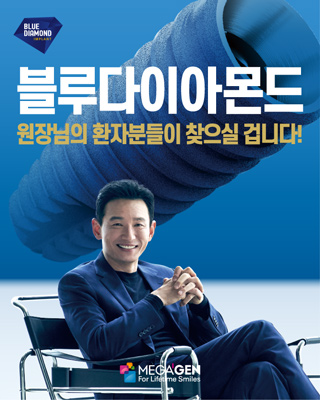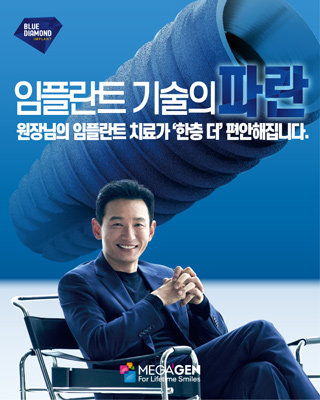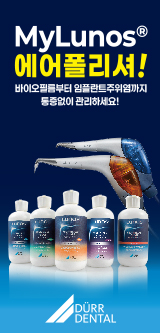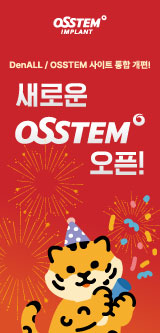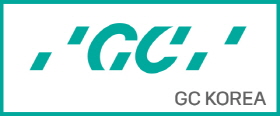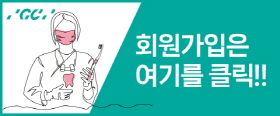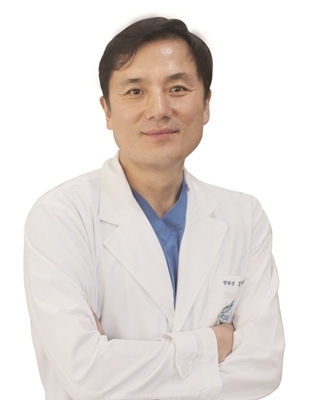
김혜성 이사장(서울치대 졸업, 동대학원 박사)
사과나무의료재단의 이사장이자, 재단 산하 의생명연구소의 미생물 연구자이다.
구강미생물에서 시작해 장내 미생물, 발효 음식의 미생물까지 폭넓게 공부하며 몇 권의 책을 냈고 논문을 발표했다.
『미생물과의 공존』 『입속에서 시작하는 미생물이야기』 『미생물과 공존하는 나는 통생명체다』등 3권이 과학기술부 선정 우수과학도서를 수상했다.
특별한 전신병력이 없는 20대 젊은 환자의 사랑니를 단순 발치 한 후에 혹 항생제를 처방하시나요? 개인적으로 저는, 이런 경우에 항생제를 처방하지 않은 지 오래되었습니다.
꼭 사랑니만이 아니라도, 비슷한 경우의 단순 발치나 치주질환의 외과적 접근 같은 경우에도 항생제를 처방하지 않습니다. 그렇더라도, 감염이 생긴 경우는 거의 없었고, 설사 감염이 생겼다 하더라도, 그 이후의 항생제 처방을 통해서 문제를 해결하지 못한 경우가 없습니다. 이런 내용들을 모아 학술지에 투고한 경험도 있고요.(Kim, Oh et al. 2018)
이런저런 자리에서 저의 이런 경험을 얘기하면 가끔 좀 의아해하는 치과의사 동료들을 봅니다. 그래도 되느냐, 문제가 안 생기느냐, 겁이 안 나느냐 등등요. 환자들의 권익이 커지고, 문제에 대한 컴플레인이 많아져 가는 요즘, 그래서 ‘방어진료’라는 말까지 나오는 마당에, 만약 감염이라도 생기면 모두 제 책임이 될 테니까요. 방어진료란 말이 참 여러가지를 연상하게 합니다.
그래서일까요. 실제로 우리나라 치과에서 발치 후 항생제 처방은 매우 높습니다. 건강보험공단 자료를 바탕으로 올해 발표된 최윤영 선생님의 논문에 의하면, 우리나라 치과에서 발치 후에 항생제가 처방되는 비율은 무려 81.85%에 이릅니다.(Choi 2020) 물론, 이 수치 안에는 완전매복된 사랑니 발치처럼, 수술부위가 넓어 항생제 처방을 고려할 수 있는 증례도 있지만, 대부분은 단순 발치들입니다.
또 처방되는 항생제 역시 광범위 항생제(Broad spectrum antibiotics)가 45.88%를 차지합니다. 감염이 크지 않은 상태에서 하는 발치에는 항생제 처방이 권고되지 않고, 설사 항생제가 처방되더라도 광범위 항생제보다 협범위 항생제 처방을 먼저 하라는 가이드라인과는 정반대의 처방 양상이 보이는 거지요. 말 그대로 방어진료가 아닐까 합니다.
이런 현상은 비단 우리나라 치과계에만 나타나는 현상이 아닙니다. 공미진의 연구에 의하면, 우리나라 내과, 소아과 같은 1차 의료기관에서 감기(상기도 감염)를 진단명으로 해서 처방되는 항생제 처방비율 역시 72.14%에 이르고, 이비인후과는 특히 높아 82%가 넘습니다.(공미진 2016) 또 항생제를 줄여야 한다는 세계적인 흐름과는 달리 우리나라 항생제 처방 양상은 지속적으로 증가하고 있고요.
세계적으로 볼 때 치과에서 항생제가 처방되는 비율은 10% 내외인데, 여기서 심지어 90%에 이르는 항생제가 부적절하게 처방된다는 지적이 있을 정도입니다. 예를 들어 미국 재향군인병원을 대상으로 한 연구에서도 발치후 항생제가 처방되는 비율 역시 82.5%에 이르니까요.(Suda, Henschel et al. 2017)
항생제 처방이 조심스러운 이유는, 모두가 다 아는 항생제 저항성 때문입니다. 세균의 세포벽을 깨고, 유전자를 파괴해서 항균 정균 효과를 주는 항생제는 역으로 세균의 생명 활동을 자극하여 내성을 갖게 합니다. 세균 역시 인간처럼 환경이 바뀌면 그에 적응하면서 생존과 번식을 지속하려 할 테니까요.
그래서, 1928년 플레밍에 의해 처음 발견되어 2차대전 즈음부터 전장의 병사를 살리고 폐렴으로 죽어가던 환자들을 살리며 기적의 약으로 떠올랐던 항생제는 조금씩 약발을 잃어가고 있는 중입니다. 예를 들어, 피부감염에 가장 많이 관여하는 황색포도상구균은 페니실린에 의해 1940년대에는 거의 대부분이 죽어 나갔으나, 1950년대에는 40%가 내성이 생겼고, 1960년대에는 80%가 내성이 생겨 21세기 들어서는 아예 원조 페니실린은 쓸 수가 없게 되었으니까요.(Chambers 2001)
이것이 인간이 개발한 항생제에는 전혀 약발이 먹히지 않는 다제내성균 출현의 시작일 것이고, 그 내성균의 출현은 인간이 항생제 개발 이전으로 돌아가는 것 아니냐는 우려까지 낳고 있습니다. 실제로 미국에서만 항생제 저항세균으로 인한 감염으로 연간 3만 명 정도가 사망하고 있고, 영국 통계청은, 항생제 저항세균 때문에 더 이상 인류의 기대수명이 늘지 않는다는 발표도 할 정도니까요.
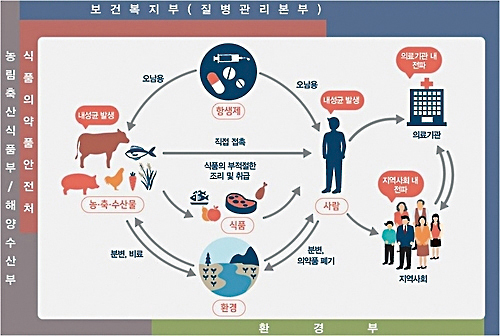
줄일 수 없을까요? 참 어렵습니다. 환자와의 신뢰가 가장 중요해진 시대에 자칫 감염 때문에 환자에게 문제가 생기는 상황은 누구나 책임지기 싫습니다. 그게 항생제 저항성이라는 공중보건의 중대한 문제에도 불구하고, 의료인 개인이 진료의 책임을 져야 하는 진료현장에서는 항생제 사용이 줄지 않는 주요한 이유일 겁니다.
장기적으로 보면, 치과에서도, 항생제 처방을 하지 않아 문제가 생기는 경우, 협회를 비롯한 의료단체와 정부가 일정한 완충역을 해주는 제도적 장치가 있어야 하지 않을까 싶습니다. 또 치과에서도 항생제 처방을 낮출 수 있는 인센티브 같은 것도 생각해 볼 가치가 있습니다.
나아가 대형의료기관에서 실시하는 항생제 관리프로그램(antibiotics stewardship program) 같은 것도 협회 차원에서 검토해 볼만 하다고 보고요. 미국 치과의사협회는 이런 항생제 관리프로그램을 시행하고 있는 듯 보입니다. https://www.ada.org/en/member-center/oral-health-topics/antibiotic-stewardship
이런 제도적 장치 외에도 현장의 치과의사들 역시, 자기 규제(self regulation)를 통해 항생제 사용을 낮추는 노력 역시 필요하지 않을까 합니다. 자기 규제를 통해 가용할 수 있는 과학적 근거를 최대한 활용하여 환자에게 최선을 다하는 것이 전문가주의(professionalism)의 미덕일 테니까요.
개인적으론, 항생제를 처방하지 않는 이유에 대해 환자에게 꼭 설명합니다. 항생제는 꼭 필요할 때만 쓰는 약이고, 더 중요한 것은 본인의 면역력일 테니 조금만 지켜보자고요. 대신 아플 수 있으니 진통소염제만 처방하니, 약 드셔보시고 내일 꼭 내원하시라고요.
이런 환자와의 대화 역시 저의 방어진료의 한 방편일 수 있겠지만, 이런 말을 듣는 환자의 반응 역시 나쁘지 않다는 것을 경험합니다.
Chambers, H. F. (2001). "The changing epidemiology of Staphylococcus aureus?" Emerging infectious diseases 7(2): 178.
Choi, Y.-Y. (2020). "Prescription of antibiotics after tooth extraction in adults: a nationwide study in Korea." Journal of the Korean Association of Oral and Maxillofacial Surgeons 46(1): 49-57.
OBJECTIVES: This study aimed to understand the nationwide patterns of antibiotic prescription after tooth extraction in adult patients. MATERIALS AND METHODS: This study analyzed dental records from the National Health Insurance Service-National Sample Cohort (NHIS-NSC) database on 503,725 tooth extractions performed in adults (≥19 years) during 2011-2015. Patient sex, age, household income, systemic disease (diabetes mellitus and hypertension), type of dental institution, region of dental institution, year of prescription, and type of tooth extraction procedure were considered. The antibiotic prescription rate and broad-spectrum antibiotic prescription frequency were analyzed using chi-squared tests. Factors affecting the prescription of broad-spectrum antibiotics were evaluated using multivariate logistic regression analysis. RESULTS: The rate of antibiotic prescription after tooth extraction was 81.85%. Penicillin was most commonly prescribed (45.25%), followed by penicillin with beta-lactamase inhibitors (18.76%), metronidazole (12.29%), and second- to fourth-generation cephalosporins (11.52%). The proportion of broad-spectrum antibiotics used among all prescribed antibiotics was 45.88%. CONCLUSION: The findings of this study demonstrate that the rate of antibiotic prescription after tooth extraction is higher in Korea than in other countries. Furthermore, broad-spectrum antibiotics are used more frequently, which may indicate unnecessary drug prescription, an important contributor to antibiotic resistance.
Kim, H., et al. (2018). "Reduced antibiotic prescription rates following physician-targeted interventions in a dental practice." Acta Odontologica Scandinavica 76(3): 204-211.
Suda, K. J., et al. (2017). "Use of Antibiotic Prophylaxis for Tooth Extractions, Dental Implants, and Periodontal Surgical Procedures." Open forum infectious diseases 5(1): ofx250-ofx250.
BACKGROUND: Guidelines for antibiotics prior to dental procedures for patients with specific cardiac conditions and prosthetic joints have changed, reducing indications for antibiotic prophylaxis. In addition to guidelines focused on patient comorbidities, systematic reviews specific to dental extractions and implants support preprocedure antibiotics for all patients. However, data on dentist adherence to these recommendations are scarce. METHODS: This was a cross-sectional study of veterans undergoing tooth extractions, dental implants, and periodontal procedures. Patients receiving antibiotics for oral or nonoral infections were excluded. Data were collected through manual review of the health record. RESULTS: Of 183 veterans (mean age, 62 years; 94.5% male) undergoing the included procedures, 82.5% received antibiotic prophylaxis (mean duration, 7.1 ± 1.6 days). Amoxicillin (71.3% of antibiotics) and clindamycin (23.8%) were prescribed most frequently; 44.7% of patients prescribed clindamycin were not labeled as penicillin allergic. Of those who received prophylaxis, 92.1% received postprocedure antibiotics only, 2.6% received preprocedural antibiotics only, and 5.3% received pre- and postprocedure antibiotics. When prophylaxis was indicated, 87.3% of patients received an antibiotic. However, 84.9% received postprocedure antibiotics when preprocedure administration was indicated. While the majority of antibiotics were indicated, only 8.2% of patients received antibiotics appropriately. The primary reason was secondary to prolonged duration. Three months postprocedure, there were no occurrences of Clostridium difficile infection, infective endocarditis, prosthetic joint infections, or postprocedure oral infections. CONCLUSION: The majority of patients undergoing a dental procedure received antibiotic prophylaxis as indicated. Although patients for whom antibiotic prophylaxis was indicated should have received a single preprocedure dose, most antibiotics were prescribed postprocedure. Dental stewardship efforts should ensure appropriate antibiotic timing, indication, and duration.
공미진 (2016). 급성 상기도 감염 질환의 진료과별 의약품 처방특성, 부산카톨릭대학교 대학원.




